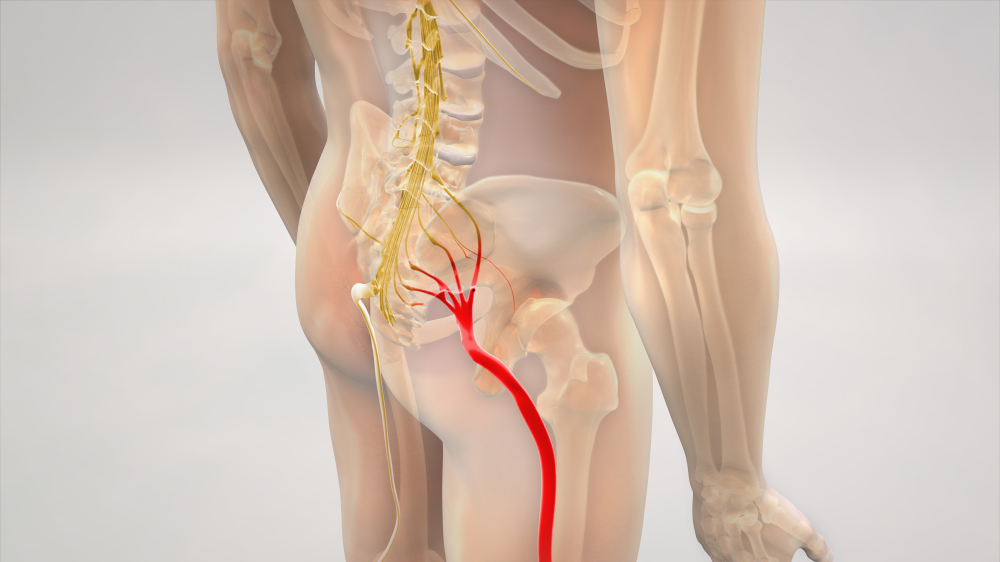The sciatic nerve starts at the spinal cord and runs through the buttocks and hips, branching down both the legs. It is the longest nerve and among the most major nerves in the body. The nerve affects the ability to control your legs.
Sciatica is a painful condition that starts as moderate and continues to become severe over a prolonged time. The sensational pain affects the lower back, hips, and legs. It can also result in numbness and weakness of these body areas.
Causes of Sciatica
The condition can be a result of various associated health issues that mostly involves the spine. Sometimes, an injury or spinal nerve tumors can also lead to sciatica.
Here are the most common causes of sciatica you should understand to identify the potential chances of the condition:
Herniated discs
Our spinal bones or vertebrae are connected with pieces of cartilage in between, which is filled with a clear and thick material to allow cushioning and flexibility for easy movements. When the cartilage’s first layer rips, it leads to a herniated disc. The substance in the cartilage can put pressure on the sciatic nerve causing pain and numbness in the lower limb.
Spinal stenosis
Spinal stenosis or lumbar spinal stenosis is the abnormal narrowing of the lower spinal canal. The condition exerts pressure on the sciatic nerve roots and spinal cord causing sciatica.
Spondylolisthesis
Spondylolisthesis is a condition related to degenerative disk disorder – one spinal bone extends over another pinching nerves that build the sciatic nerve, thus leading to the excruciating pain and numbness due to sciatica.
Piriformis syndrome
Piriformis syndrome is an uncommon neuromuscular disorder that involves involuntary contraction of the piriformis muscle that causes sciatica. The piriformis muscle is the one that connects that lower spine to the thighbones.
Due to contraction or tightening of the muscle, the sciatic nerve may feel the pressure causing pain in the lower back, hips and legs.
Symptoms of Sciatica
In most cases, sciatica shows affect on one leg and the symptoms start showing up from the lower back to the thigh, reaching down the leg. The common signs that should alert you for sciatica include:
- Constant or intermittent pain – burning, sharp sensation or shooting pain
- Altered sensation of tingling, numbness, or reeling pain at the back of the leg.
- Weakness in the leg and foot, or feeling heavy/difficult to walk
- Certain postures may affect the pain positively or negatively, such as sitting for long hours may aggravate the pain, whereas walking can relieve the pain.
Risk factors for sciatica
If you belong to any of the following categories, you are probably at risk of having sciatica:
- Age: With age, the spine goes through changes that lead to bone spurs and herniated discs that are potential causes of sciatica.
- Prolonged sitting: If you are into a profession that involves sitting for prolonged hours, you may develop sciatica with the sedentary lifestyle.
- Obesity: As the stress on your spine increases with the additional weight, the spinal changes can trigger sciatica over time.
- Occupation: If your job demands you to lift heavy loads, twist your back or drive a vehicle for long hours, it might contribute to causing sciatica over the years.
- Diabetes: Diabetes is one of the main causes of nerve damage.
Meet Dr Reddy for a diagnosis of sciatica if you can relate to any of the above-mentioned information about the condition.
